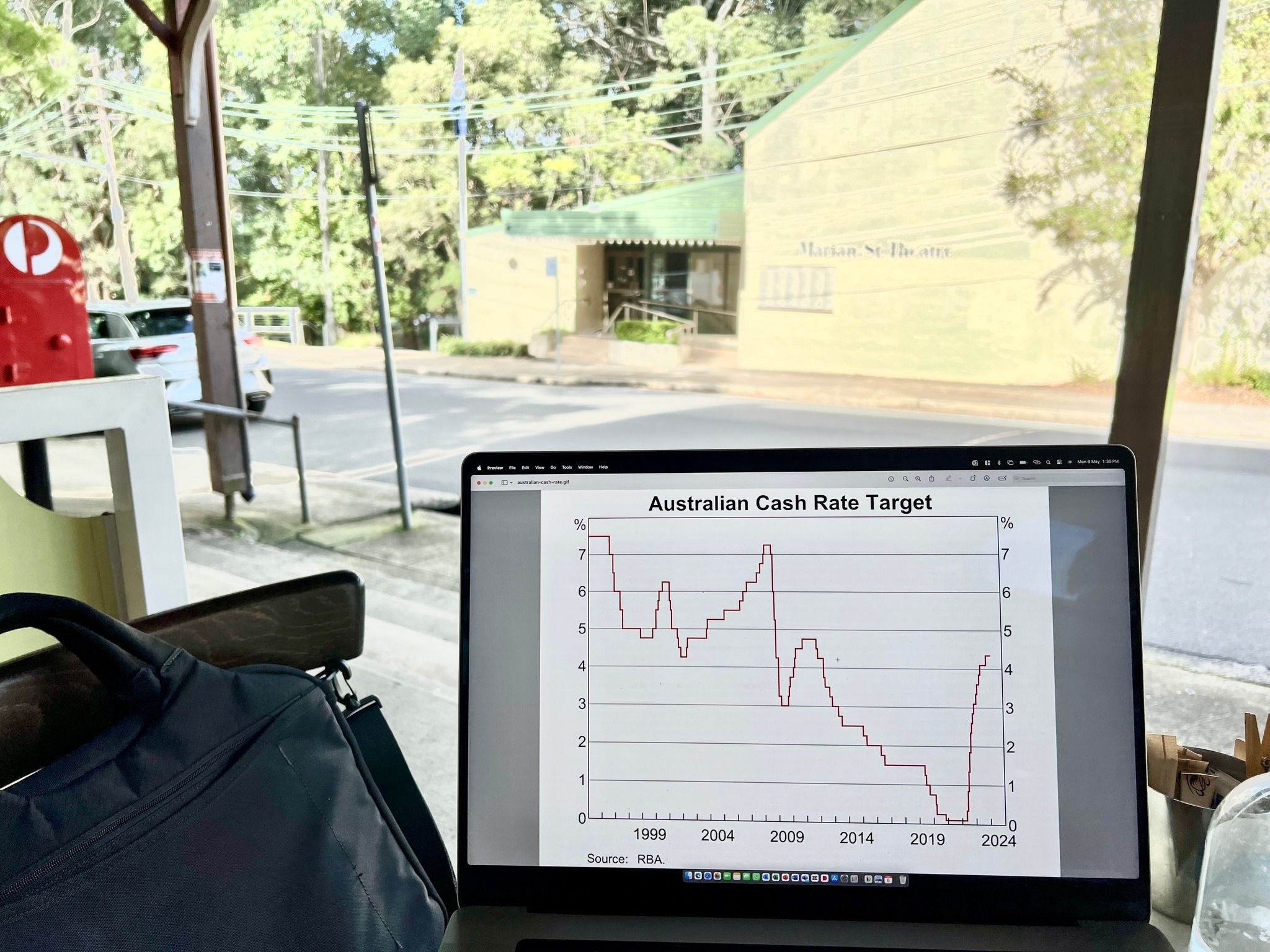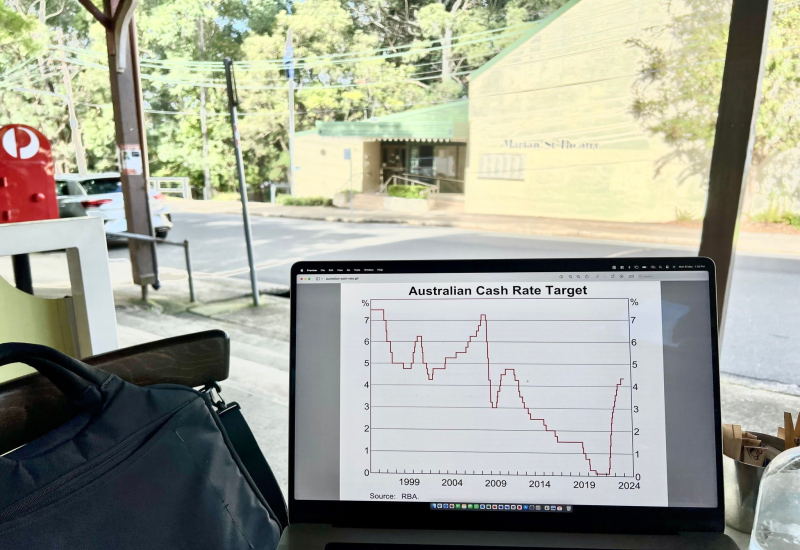Of the Killara residents I met yesterday, NSW Housing Policy was the main topic but Marian Street Theatre was mentioned as well.
Council currently has an approved Development Application to renew and expand the theatre. The 2018 community-led price estimate was $10m, but an experienced quantity sureyor has priced it at $24m. This is for a 249 seat theatre, as site constraints cannot support more than that without triggering other issues.
Council currently does not have $24m of 𝘶𝘯𝘳𝘦𝘴𝘵𝘳𝘪𝘤𝘵𝘦𝘥 funds sitting around so residents have been keen to explore alternate funding solutions.
One idea has been to borrow money. This was a popular idea in 2021 but Australia’s cash rate has since gone up from 0.10% to a 10-year high of 4.35%. Most bank loans are 5-7%. So if council had borrowed money to build the theatre, it would have been over a million of interest alone, plus principal repayments and operating costs taking it to $2m per year.
Another idea has been to use developer contributions. This currently isn’t possible as Marian Street Theatre is not listed in Ku-ring-gai’s 2010 Contributions Plan, though the contributions plan will eventually have to be updated to reflect the dramatic changes anticipated from NSW Housing Policy. As for why Council hasn’t updated it for 14 years, it’s because the Contributions Plan was developed under a legacy system where contributions were not capped. However the modern system imposes caps to the size of each contribution, which has made it extremely difficult for other councils to raise funds to deliver much-needed infrastructure. NSW councils have been complaining about this issue for years! But Ku-ring-gai is fortunate to have established a development contributions plan just before the change in the system, and so has held onto the old plan to maximise the infrastructure we deliver for you.
The increased population will not only increase the volume of development contributions (for upfront construction costs), but also an increase in rates and fees (for covering ongoing operational costs). This may improve the viability of the theatre in the coming years.
Before the announcement of all these housing policy changes, another funding option floated has been a once off increase in rates (special rates variation) similar to what Hornsby and Willoughby have done in the last two years. In Ku-ring-gai’s case, we have had a 40% increase in operating costs in the last decade while the rates that we collect (which are pegged by the State Government) have only increased by 28%. Council can continue to identify cost efficiencies but at some point, there will be no more to squeeze out.
Yet another idea has been to sell community land to fund the theatre. But in an LGA where we are expecting the population to double, selling off community recreation space is a bit short-sighted.
There was also the option of using proceeds from the sale of the old Lindfield library site to fund the build of the new theatre – and this is an idea that I still support to this day. But with the new library delayed in its current form, it means the sale of the old library is delayed and there is a chain reaction to the timing of Marian Street Theatre.
In all of the sceanrios mentioned above, I wouldn’t expect Council to be able to fund the construction of the theatre until 2026/7. And for someone with a long-term view like myself, that’s fine. But I also understand that for Killara residents, they would prefer a shorter (but unachievable) time horizon.
I also understand that with a local government election coming up, there is already electioneering on this topic. The reality though is that all Gordon ward candidates will likely want to build the theatre, and regardless of who the community elects, each councillor will be faced by the same constraints listed above. Don’t think that by electing so-and-so, it will improve outcomes on this particualr issue. You’ll need to decide who to vote for based on other criteria.
In February, our Gordon Ward councillors moved a motion to explore a lower cost ‘open the doors’ option for the Marian Street Theatre. That report will come out in June, and will inform us of whether there is a viable lower cost way of reviving the theatre.

